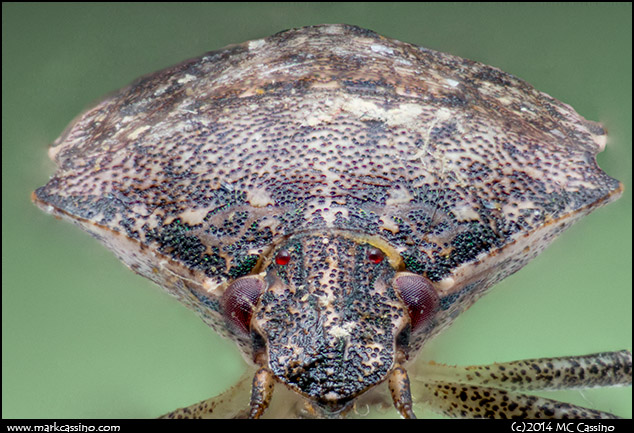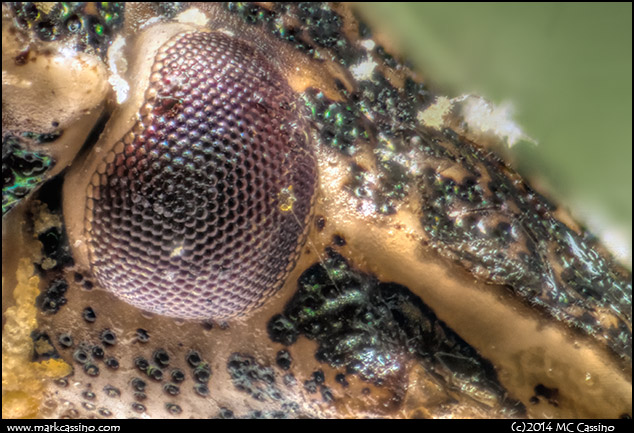Extreme Macro: Stinkbug!
Here are some fairly high magnification photos of a stinkbug - the only insect that I have recently encountered here in December’s chill. These bugs have been something of a nuisance as last winter and again this year they try to get into the house in late autumn and one or two might appear at any time during the winter. In this case, when I saw it walking across the floor I put it in a jar and then into the freezer. An hour or so later had it pinned and ready for photographing.
Here is the first image, taken at about 2.5x life sized (be sure to click on it for a larger and uglier file):

Here is the second image, which is a more extreme magnification of ~10x:

These aren’t the best examples of this type of photography but the first one is passable. Here are a few technical notes about technique:
Both shots were made using a Pentax K-01 16 megapixel APS C camera. The K-01 was Pentax’s somewhat quirky mirrorless body. I chose it because its focus peaking is excellent, having no mirror means no mirror shake and the sensor in this camera (made by Sony) is one of the best APS-C sensors out there.
One problem I experienced with both images was a loss of sharpness due to the shake of the camera’s shutter. This simple solution to this was to light the photos using flash and crank the shutter all the way up to 1/4000th (the fastest that the K01 can do.) A single flash with a few pieces of white matboard as reflectors did the trick.
The camera was mounted on a focusing rail to allow it to be evenly moved along to create a set of images for stacking. I put a 2 inch spring clamp on the little knob on the focusing rail, which became a small lever that greatly improved my ability to make fine adjustments to the rails’ position.
A Pentax 50mm DFA f2.8 macro lens was used for the first image. This was just a straight macro shot - the lens was set to it’s closes focus point and then mounted on an additional 68mm of extension tubes yielded about 2.4x lifesized magnification. This was shot with the lens wide open at f2.8. With the extension the effective aperture was f7, which should be below the threshold where diffraction starts to limit sharpness. I am lucky enough to have an old set of extension tubes with full electronic contacts, so the TTL flash handled the exposure just fine.
The second photo was made using an Otamat 10mm f1.7 lens mounted on the K01 along with 68mm of extension. I bought this and the 20mm Otamat lens some time ago, but never got around to experimenting with them. The lens I have is mounted on a Pentax body cap so it just attached directly to the extension tubes. I held a ruler up to the lens and just over 2mm filled the frame. Since the K01’s sensor is 23.7mm wide, its safe to say the magnification of this setup was about 10x. Backing into the aperture calculation, the effective aperture would around f19, so diffraction would be expected. Since TTL flash is not supported for the Otamat lens (no contacts to communicate with the body) I just shot with manual flash, which was easily done by taking a few test shots and adjusting the flash’s power setting. This this case the stack was over 100 images (very shallow depth of field.) Unfortunately, this image is just not as sharp as I’d like - I assume due to diffraction.
Both images were stacked in Zerene Stacker. I initially stacked them both in Photoshop CS6, but this was very time consuming and produced poor results - lots of halos and other artifacts.
I’m hoping to explore this technique a little more, hopefully with some more appealing subjects. I have to say - after impaling the stinkbug on a pin, I immediately understood how they got their name!